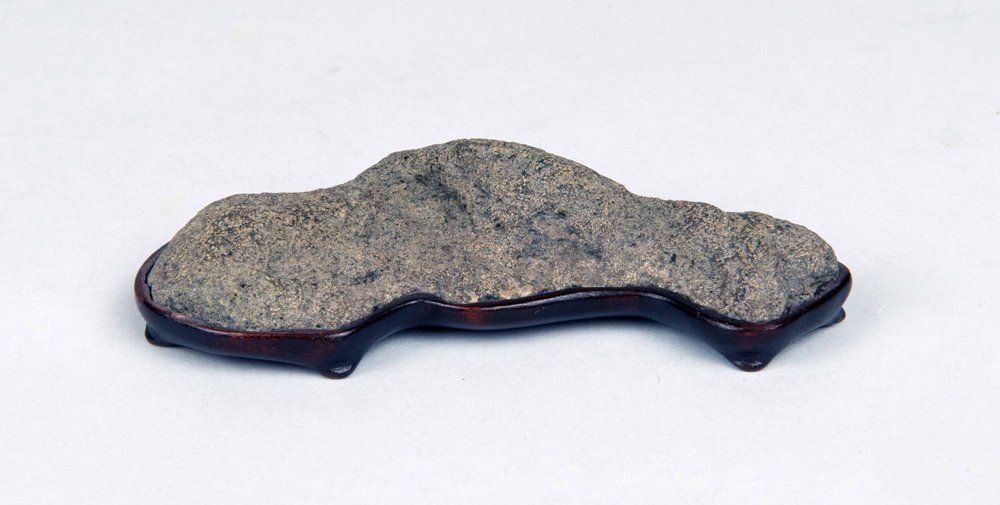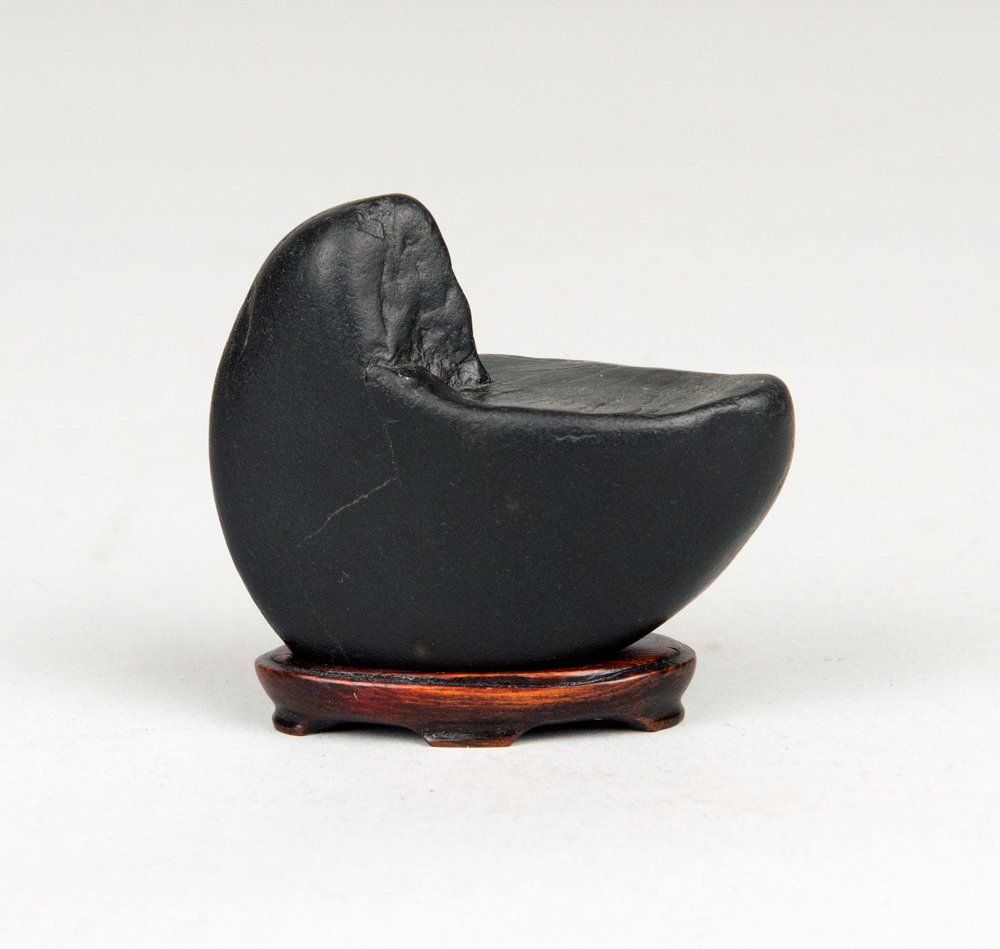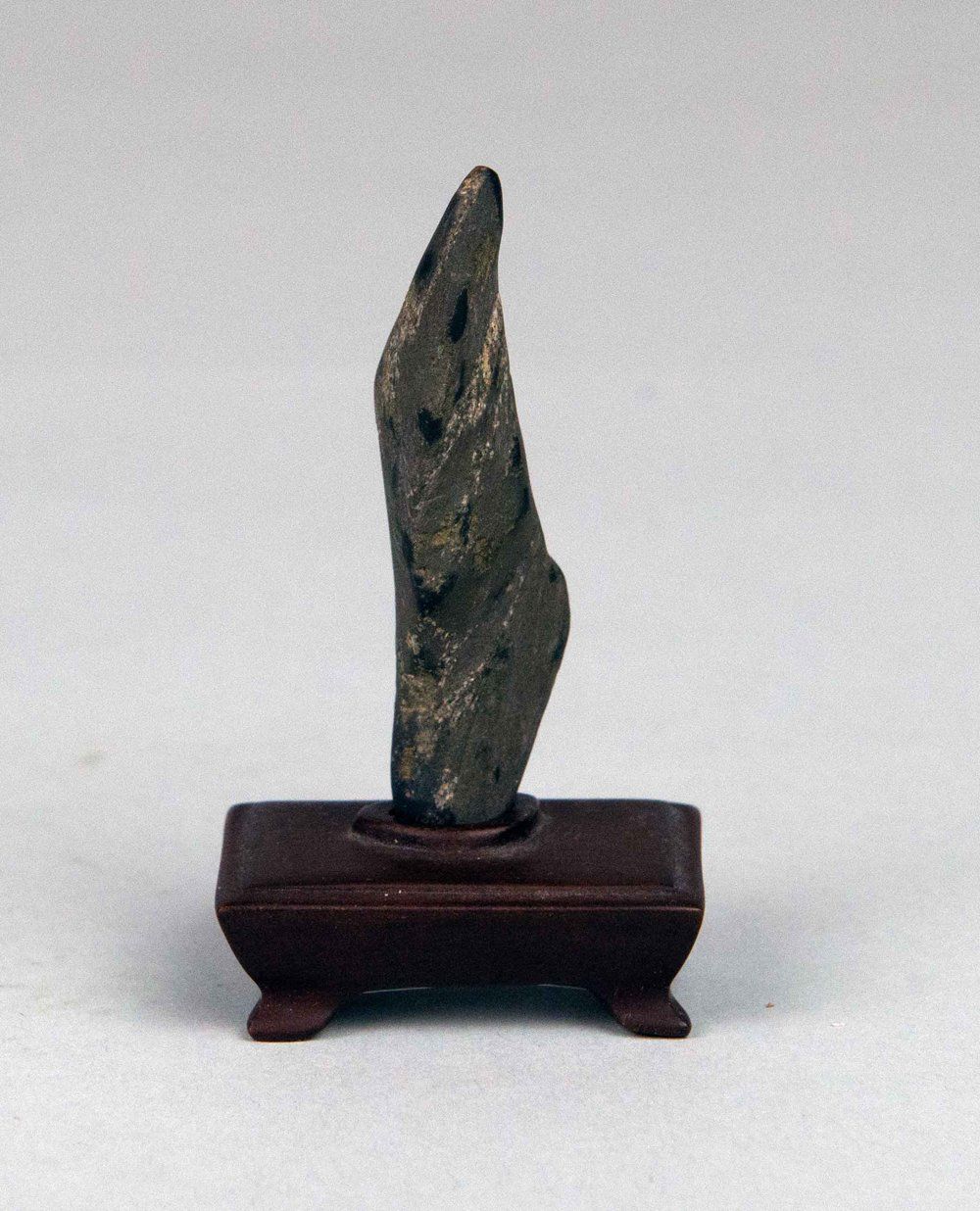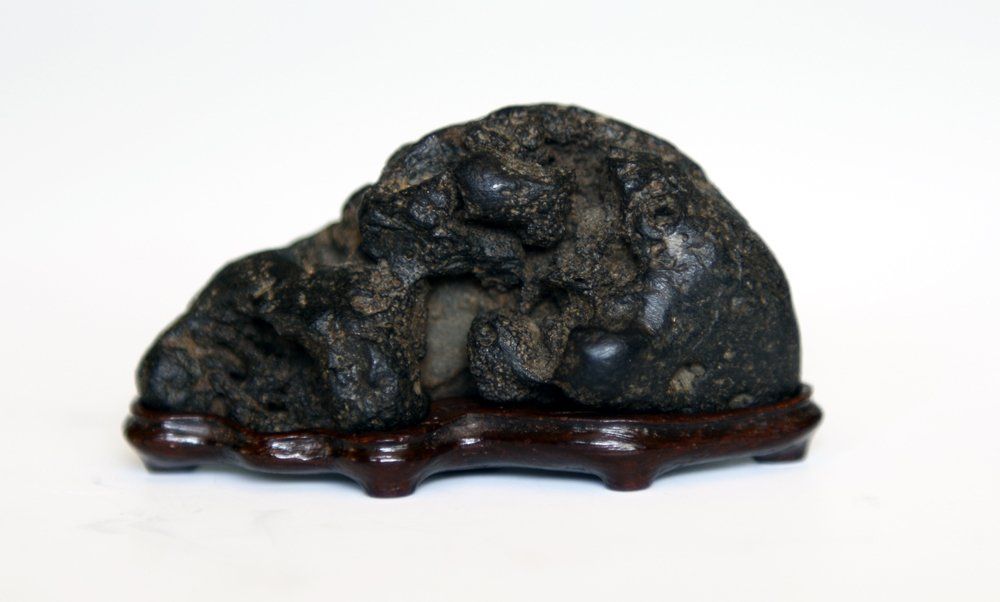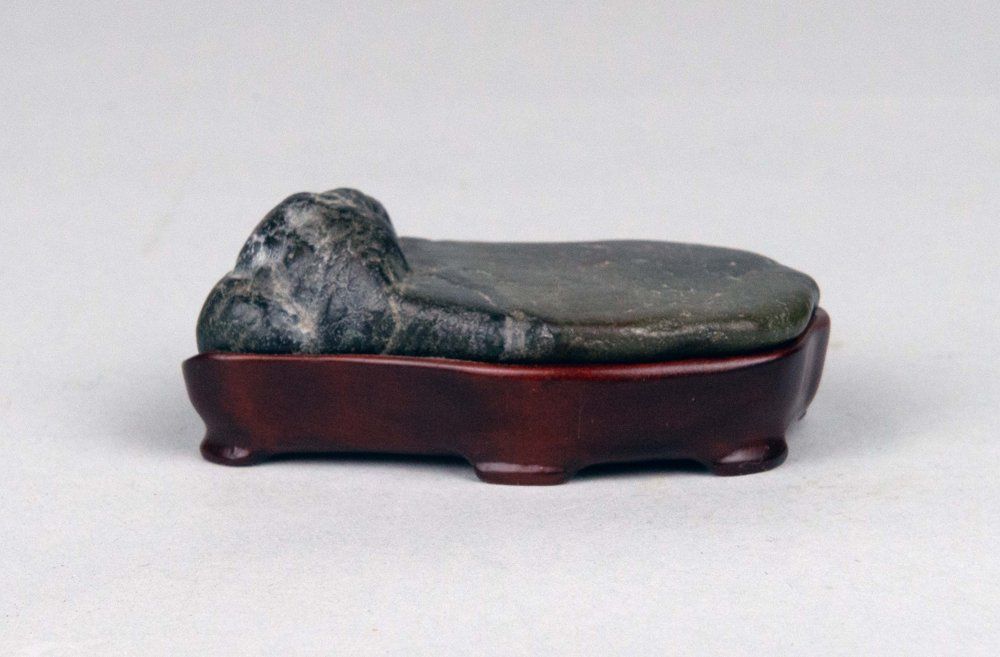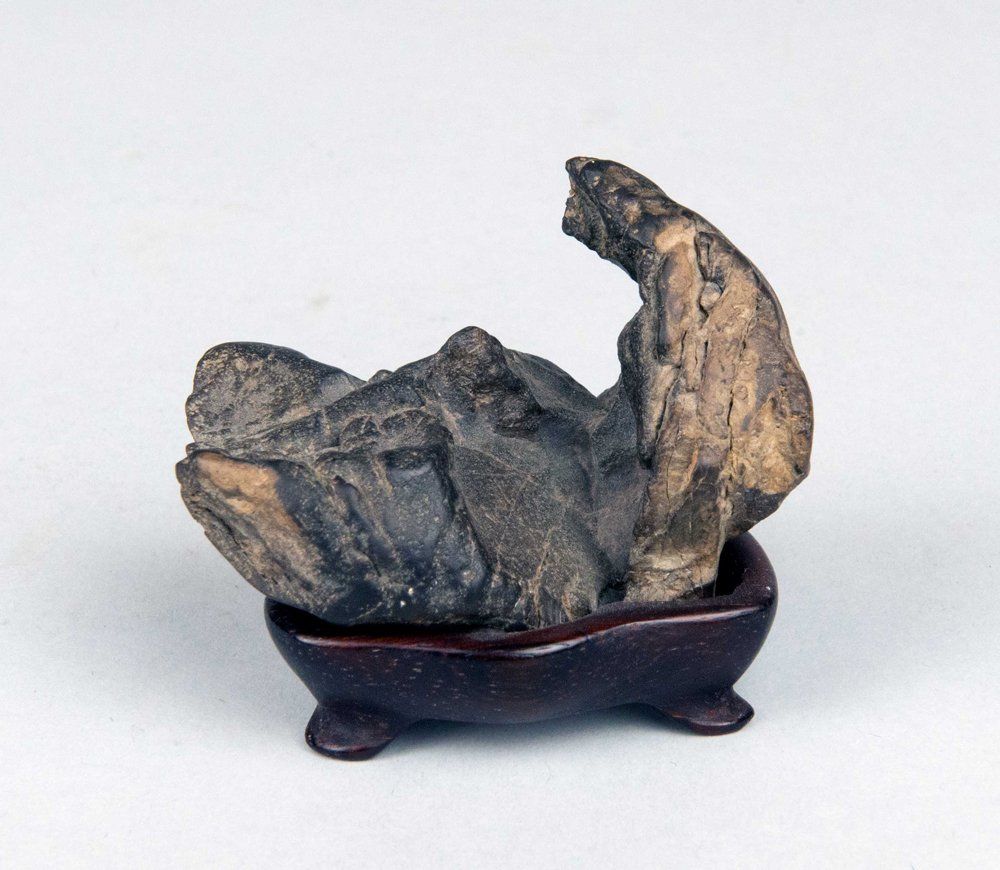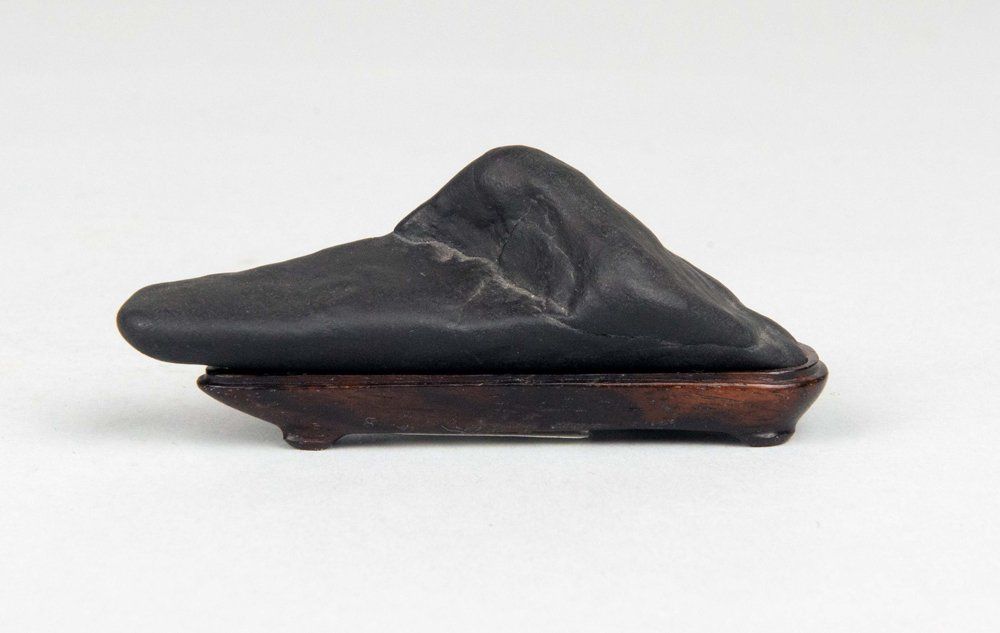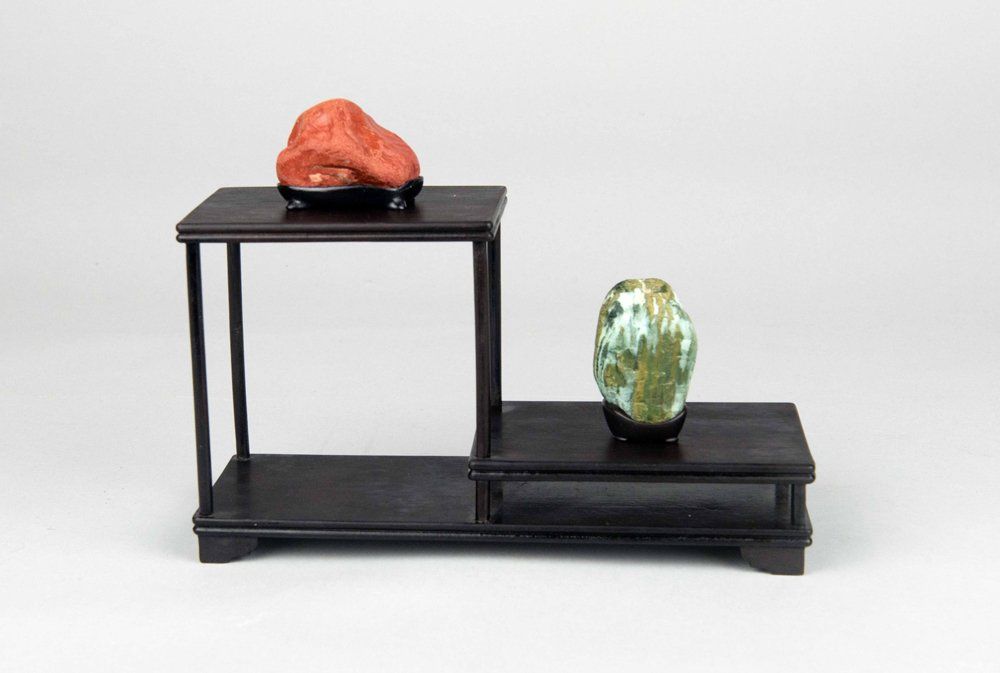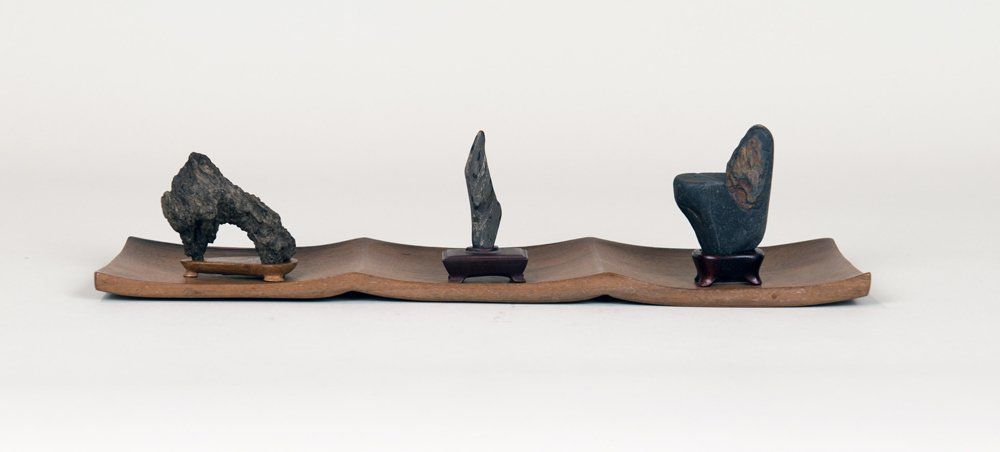The Beauty of Small Stones
By Thomas S. Elias, October, 2020
The collection and display of small viewing stones is often an overlooked aspect of stone appreciation. The features of small stones are just as beautiful and intriguing as larger stones, however, smaller stones require close examination to appreciate all their salient features. Their features are usually more subtle than the physical aspects of larger stones. Taking the time to view each feature carefully can be rewarding.
Small stones are not often exhibited in major exhibitions due to their size and the possibility of security issues. Visitors to Japan’s largest public displays of suiseki—the Meihenten and the Japan Suiseki exhibitions in Tokyo, the Taikanten in Kyoto, and the All Japan Aiseki exhibitions in different cities—can see that the majority of exhibited stones range between 30 and 60 cm (11.8 and 23.6 inches) wide. This size range is generally regarded as standard suiseki (Murata, 1965; Tanaka, 1967), while rocks of more than 60 cm are sometimes referred to as big susieki by Japanese stone enthusiasts.
Small stones, 20 cm or less (7.8 inches), play an essential role in Japanese suiseki in contemporary times. An examination of the book Densho-seki (Historical Stones) published in 1988 describes and illustrates over sixty stones that are 20 cm or less in size. Twenty-four of the suiseki in this compendium of historically valued Japanese stones are 12 cm (4.7 inches) or less in length, width, or height. Small stones were equally as important as larger stones. However, the small rocks require display spaces smaller than those needed for larger rocks. If tiny stones are displayed in large cavernous exhibition halls, they are totally out of scale with the display space. These diminutive stones are best displayed in smaller, more intimate areas where viewing at close range is possible.
The criteria used to evaluate stones (form, color, composition, and texture) are the same as the criteria used to assess large stones, and the criteria used in making a superior display (scale and proportion, balance, hierarchy and emphasis, similarity and contrast, and unity and harmony) are the same for either small or large stone displays. The only significant difference is the physical size of the viewing stone.
A viewing stone must be in scale to the display space and should harmonize with the other elements to make a successful display. The stone should be the primary object rather than subordinate to additional features in the exhibit. A viewing stone can be too small or too large in relationship to the height and width of a tokonoma, a dedicated alcove in a home solely for the display of art. A suitable scale between the viewing stone, the other objects used in a display, and the size of the tokonoma are critical to achieving an effective presentation.
Defining what constitutes a small stone is open for discussion. There is no consensus among the suiseki and Aiseki communities in Japan as to the acceptable size. At least two books devoted solely to small stones have been published in Japan. Eguchi published Love of Small Stones in 1966 and Tanaka published Small Stones for Hobby in the following year. Since then, occasional local or regional exhibits of the elfin-sized stones are held. Size requirements depend upon the preferences of the organizations sponsoring a show or those of a writer preparing a paper or book. See the December 2019 VSANA feature article, A Japanese Shohin Suiseki Exhibition as an example of a regional show.
In Japan, small viewing stones are often divided into subcategories based upon size. The smallest group is the sunseki or komono suiseki, which are stones under five cm in size. The term Mame suiseki in Japan is also used for stones that are 5 cm wide or less, while rocks that range from 5 to 10 cm are referred to as shohin suiseki, and larger stones 10 to 20 cm are shojo-seki. Exceptions to these general categories exist in Japanese literature.
Small viewing stones are ideal for display in homes and apartments. They are also suitable for display in specific galleries with appropriately sized spaces for displaying smaller objects. Small stones are ideal for illustrating in books and on the internet because a small stone can be shown larger than its actual size. Viewing and appreciating aesthetically pleasing stones is primarily a personal experience between the viewer and the stone. The ability to hold a stone in one’s hand and observe its main features is the most rewarding experience of all. A small stone can evoke the same strong feelings as a larger stone.

